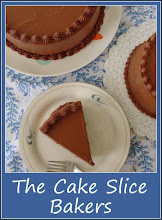 Last week I opened the door and was presented with a selection of the latest indulgent chocolate GU puds, packed in an appropriately named special goodie bag. I had been asked if I would like to review some of their products a few weeks back but the original delivery date got cancelled due to the snow, so it was a lovely surprise to open the door to them last week.
Last week I opened the door and was presented with a selection of the latest indulgent chocolate GU puds, packed in an appropriately named special goodie bag. I had been asked if I would like to review some of their products a few weeks back but the original delivery date got cancelled due to the snow, so it was a lovely surprise to open the door to them last week.I opened the bag with glee and found a box of their chocolate mousses, a box of hot chocolate soufflés, a tub of millionaires flapjack and a most decadent looking chocolate brownie cake. You can only imagine the squeal of delight from my chocolate-obsessed family at seeing all these goodies. I managed to prevent them from ripping open the boxes straight away and instead set up a taster session over the next few nights to ensure we all got a taste of the goodies.

First on the list was the Chocolate Brownie Cake, the newest addition to the GU range. Its appearance is one of insane chocolate indulgence. Two layers of dense chocolate brownie cake sandwiched together with a chocolate cream, topped and covered in a rich chocolate icing, finished with dark chocolate curls and studded with chocolate teardrops. Now that’s a lot of chocolate! It’s cute and dinky in size but so rich that we found it served 6 quite easily.

The cake/brownie layers I found to be very dense and stiff, so much so that it was quite hard to cut through, but it was a very cold day so I don’t think that helped. The layers were very sweet and fudgy with a slight chew. The appearance of the cake looked quite soft and gooey but unfortunately I found them to be a little dry. I tried warming a slice in the microwave and this improved the cake immensely. The chocolate melted and the brownie layers softened and turned gooey. I think GU should suggest heating the cake as a serving suggestion, as warming it made it taste divine.

Next on the list were the Deeply Decadent Choc Mousses. I liked how they came in their own glass ramekins, which made them seem much more sophisticated than if they had been served in a plastic container. Plus, you get to keep the ramekins after you’ve eaten the pud. The mousse itself was thick yet studded with tiny air bubbles which kept it light and helped it melt deliciously on the tongue. It tasted of real chocolate, rather than cocoa powder and was not too sweet nor too bitter as it was made with a good high percentage milk chocolate.

GU have recently launched three different tubs of chocolaty themed treats, all appropriately named Naughties. I was sent a tub of Millionaires Flapjack – flapjack base topped with a layer of caramel and a thick top coating of chocolate, oh so naughty but oh so nice. The flapjack was chewy yet not too sweet with a good texture from the oats. The caramel layer was smooth and creamy and the thick top coating of chocolate added a nice contrast. I can imagine a tub of these disappearing in minutes if left unattended on a desk.

The Hot Chocolate Soufflés were the puds I was most looking forward to and they didn’t disappoint. They start off looking similar to the chocolate mousses, but after a short bake in the oven they form a thin delicate sponge crust which when pierced with a spoon reveals a dark oozing hot chocolate gooey centre. The aroma that wafted up from the soufflé was amazing, a deep dark chocolate that just made my mouth water. As I tasted the first spoonful my mouth filled with an intense chocolate flavour, so intense that it almost tasted like there was some Brandy in it (there’s not – I checked).
 The warm bubbly soufflé mixture was wonderfully light and airy and the oozing centre so indulgent. They also came in their own glass ramekins meaning you could easily serve them to guests without having to try and transfer them into another dish before serving. I would definitely recommend these they were pure chocolate indulgence.
The warm bubbly soufflé mixture was wonderfully light and airy and the oozing centre so indulgent. They also came in their own glass ramekins meaning you could easily serve them to guests without having to try and transfer them into another dish before serving. I would definitely recommend these they were pure chocolate indulgence. 




 Ingredients
Ingredients



 For the Red Velvet Cake
For the Red Velvet Cake To make the cake, heat the oven to 180C. Grease two 9 inch round cake pans and line them with waxed paper to kitchen parchment. Grease the paper and flour the pans.
To make the cake, heat the oven to 180C. Grease two 9 inch round cake pans and line them with waxed paper to kitchen parchment. Grease the paper and flour the pans.















 Ingredients
Ingredients





